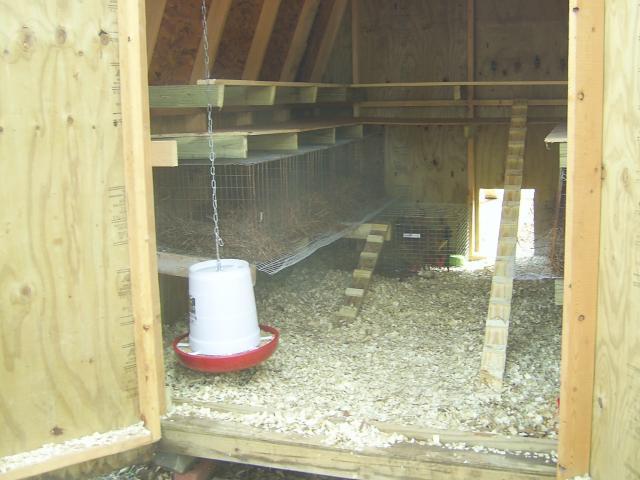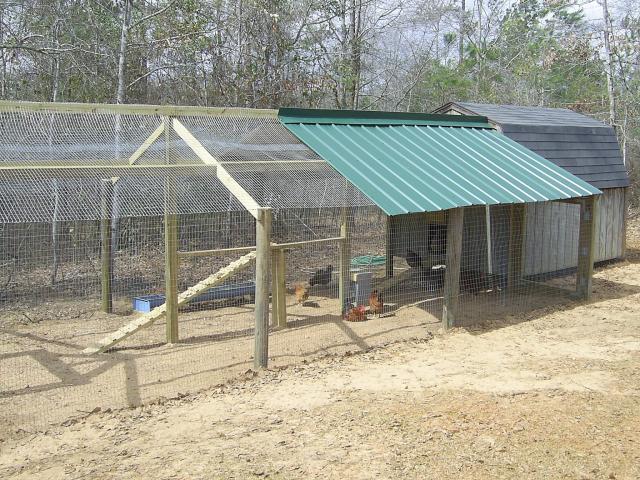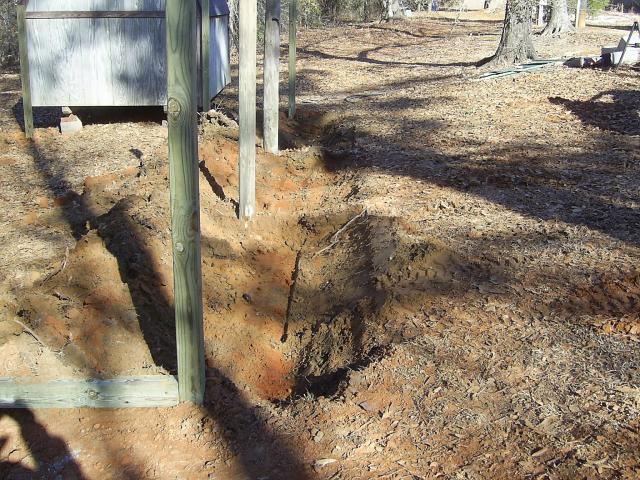- Mar 2, 2011
- 16
- 0
- 22
Our babies are a week old today! Yay...now I need to figure out where they are going to live. I'm willing to take any advice you guys have to give!
We have 6 black sex-linked pullets and 2 Brahma straight runs. They are pretty curious buggers...Anyway. We are contemplating getting up to 6 more (darn the NC 6 minimum...I really only wanted 2 more). My son REALLY wanted some Rhode Island Reds, but since this is our first attempt at chickens ( my husband and I are both 'from the city') I figure we'll take what we can get and focus on different breeds later. Anyway, 8 chicks now with a potential for a maximum of 14.
We have a lot that is .5 acre in mid-central NC. The backyard is about half of that. We have a 6' wooden privacy fence and no predators that I have seen in the yard. We do have dogs (a rottweiler-pitt bull mix, a lab-chow mix and a jack russel-beagle mix, all rescues...ok, not the rottie, we got her as a puppy). The two big dogs have the wireless collars that will not allow them to go anywhere near where the chickens will be. The little dog doesn't seem interested in them, but will get a collar as well if it seems necessary. He likes to snatch his birds from the sky as they are flying.

I have a north facing house, so I am thinking about putting the chickens in the south-western corner of the lot. I figured they would get all of the eastern morning sun and I could use the fence as one of the walls for the run. I'm also contemplating making an 'L" shaped run to take advantage of the corner...or just a large square. The run will be 6.5' tall and encased in wire mesh. I don't know how many hawks are around, but it will be covered anyway. I need to put a door in it, obviously so we can get in and out.
I want to make a coop that is elevated so 1. my son (who is a tall 12) can get in there easily to clean it and 2. provides a covered part of the run for the chicks. I have a work table already built that is no longer being used that I wanted to use as the base. The table is 32" wide by 73" long. I'm not sure this will be large enough for the chickens though. I'm thinking 3 nesting boxes. I'd like to have one whole side of the coop hinge upward to make it easier to clean out. I'm unsure where and how to put perches in though...or how tall the coop should be. We're going to use screen ventilation near the roofline to keep it ventilated. Add a locking coop door and a ramp...and I think that is most of it.
So, what have I forgotten about?
We have 6 black sex-linked pullets and 2 Brahma straight runs. They are pretty curious buggers...Anyway. We are contemplating getting up to 6 more (darn the NC 6 minimum...I really only wanted 2 more). My son REALLY wanted some Rhode Island Reds, but since this is our first attempt at chickens ( my husband and I are both 'from the city') I figure we'll take what we can get and focus on different breeds later. Anyway, 8 chicks now with a potential for a maximum of 14.
We have a lot that is .5 acre in mid-central NC. The backyard is about half of that. We have a 6' wooden privacy fence and no predators that I have seen in the yard. We do have dogs (a rottweiler-pitt bull mix, a lab-chow mix and a jack russel-beagle mix, all rescues...ok, not the rottie, we got her as a puppy). The two big dogs have the wireless collars that will not allow them to go anywhere near where the chickens will be. The little dog doesn't seem interested in them, but will get a collar as well if it seems necessary. He likes to snatch his birds from the sky as they are flying.

I have a north facing house, so I am thinking about putting the chickens in the south-western corner of the lot. I figured they would get all of the eastern morning sun and I could use the fence as one of the walls for the run. I'm also contemplating making an 'L" shaped run to take advantage of the corner...or just a large square. The run will be 6.5' tall and encased in wire mesh. I don't know how many hawks are around, but it will be covered anyway. I need to put a door in it, obviously so we can get in and out.
I want to make a coop that is elevated so 1. my son (who is a tall 12) can get in there easily to clean it and 2. provides a covered part of the run for the chicks. I have a work table already built that is no longer being used that I wanted to use as the base. The table is 32" wide by 73" long. I'm not sure this will be large enough for the chickens though. I'm thinking 3 nesting boxes. I'd like to have one whole side of the coop hinge upward to make it easier to clean out. I'm unsure where and how to put perches in though...or how tall the coop should be. We're going to use screen ventilation near the roofline to keep it ventilated. Add a locking coop door and a ramp...and I think that is most of it.
So, what have I forgotten about?









